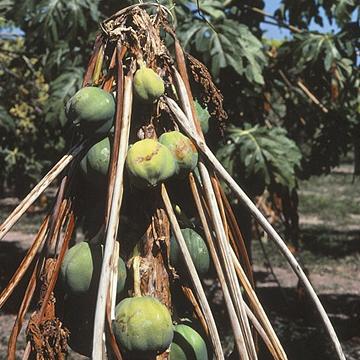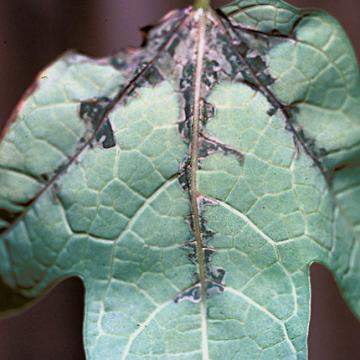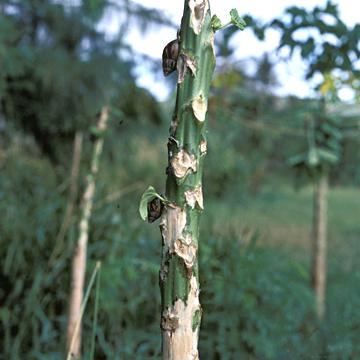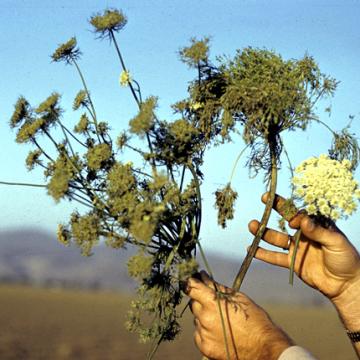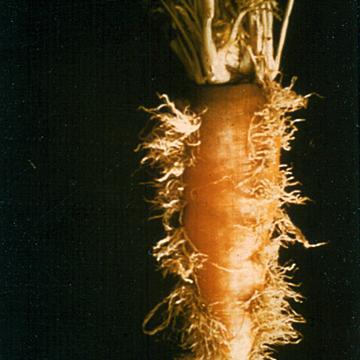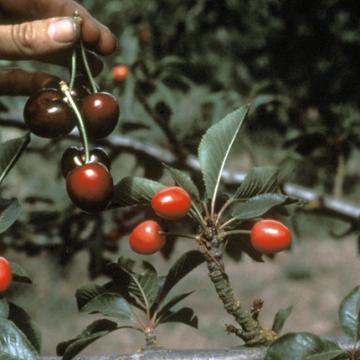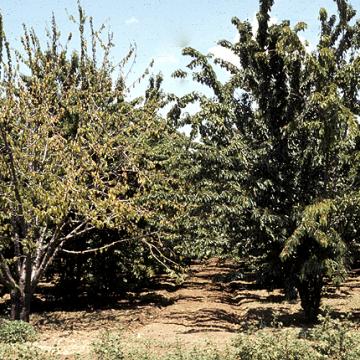DISEASE: Bacterial decline
HOST: Papaya
Bacterial decline of papaya, historically called St. Croix decline, was thought to be caused by a fungus. This picture shows a papaya with dead top and side branches, a severe stage of the disease.
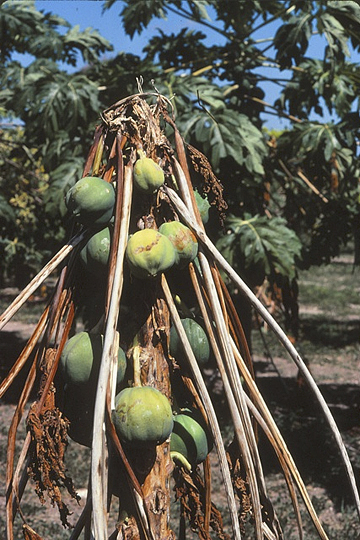
Bacterial decline | Papaya
DISEASE: Bacterial decline
HOST: Papaya (Carica papaya)
PATHOGEN: Erwinia papayae
SOURCE: M. Schroth
DISEASE: Bacterial decline
HOST: Papaya
Water-soaked papaya stem in St. Croix. Dark, water-soaked, greasy lesions occur on stems and leaves. The causal agent differs somewhat from descriptions of Erwinia papayae D strains in Micronesia.
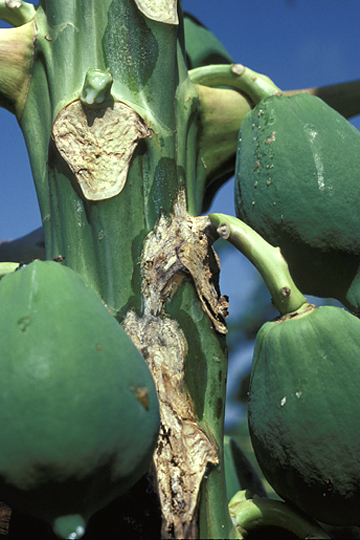
Bacterial decline | Papaya
DISEASE: Bacterial decline
HOST: Papaya (Carica papaya)
PATHOGEN: Erwinia papayae
SOURCE: M. Schroth
DISEASE: Bacterial decline
HOST: Papaya
Bacterial invasion of leaf veins and adjacent tissues of papaya in Micronesia. This disease has also been called canker, dieback, and blight.
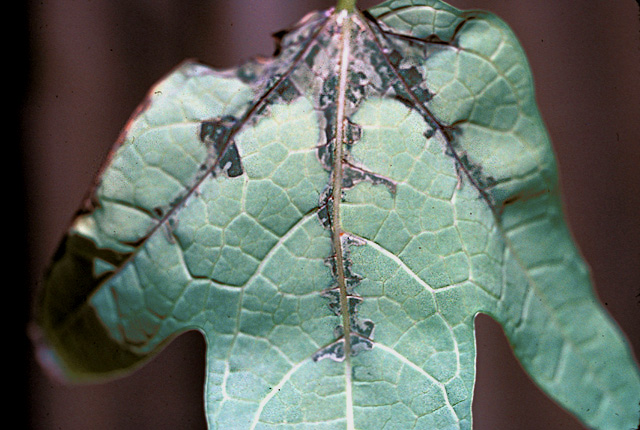
Bacterial decline | Papaya
DISEASE: Bacterial decline
HOST: Papaya (Carica papaya)
PATHOGEN: Erwinia papayae
SOURCE: E. Trujillo
DISEASE: Bacterial decline
HOST: Papaya
Complete destruction of papaya plantation in Micronesia. Only a severely damaged trunk remains.
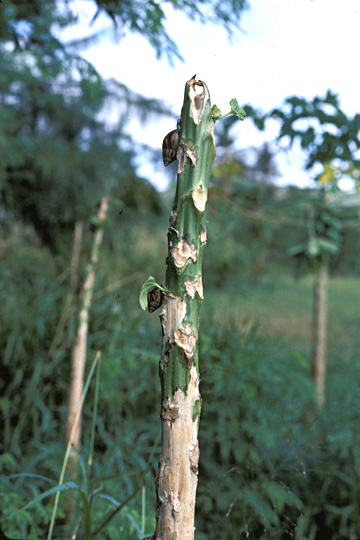
Bacterial decline | Papaya
DISEASE: Bacterial decline
HOST: Papaya (Carica papaya)
PATHOGEN: Erwinia papayae
SOURCE: E. Trujillo
DISEASE: Carrot yellows
HOST: Carrot
Flowers with shoot proliferation (witches’-broom) (left). Healthy flower (right). Virescence and phyllody of flower parts are common.
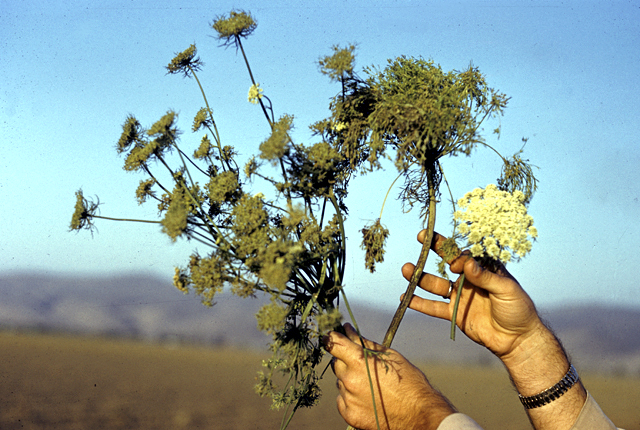
Carrot yellows | Carrot
DISEASE: Carrot yellows
HOST: Carrot (Daucus carota)
PATHOGEN: 'Candidatus Phytoplasma asteris'
PATHOGEN SYNONYM: Phytoplasma Aster yellows group
SOURCE: M. Schroth
DISEASE: Carrot yellows
HOST: Carrot
Carrot with proliferation of roots. Initial symptoms include yellowing and narrowing of veins of young leaves. The entire leaf later becomes necrotic.
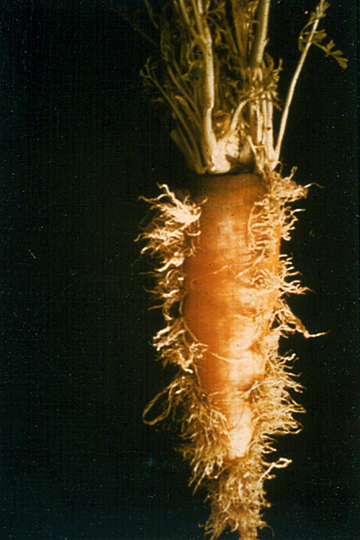
Carrot yellows | Carrot
DISEASE: Carrot yellows
HOST: Carrot (Daucus carota)
PATHOGEN: 'Candidatus Phytoplasma asteris'
PATHOGEN SYNONYM: Phytoplasma Aster yellows group
SOURCE: G. S. Abawi
DISEASE: X-disease (Western X) or buckskin
HOST: Cherry
Comparison of normal, dark cherries (in hand) with infected, immature cherries with less pigmentation.
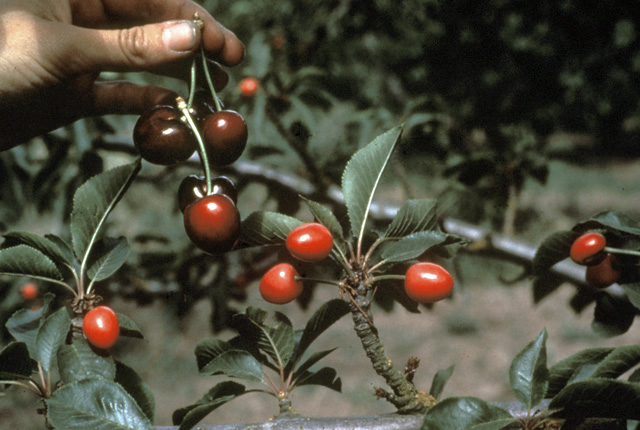
X-disease (Western X) or buckskin | Cherry
DISEASE: X-disease (Western X) or buckskin
HOST: Cherry (Prunus avium)
PATHOGEN: 'Candidatus Phytoplasma pruni'
PATHOGEN SYNONYM: Phytoplasma X-disease group
SOURCE: A. Purcell, M. Davis
DISEASE: X-disease (Western X) or buckskin
HOST: Cherry
Healthy cherry shoot (left) and stunted shoot (right).
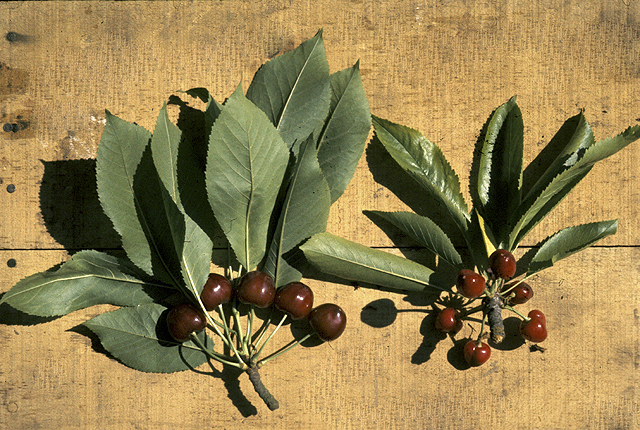
X-disease (Western X) or buckskin | Cherry
DISEASE: X-disease (Western X) or buckskin
HOST: Cherry (Prunus avium)
PATHOGEN: 'Candidatus Phytoplasma pruni'
PATHOGEN SYNONYM: Phytoplasma X-disease group
SOURCE: S. Thomson
DISEASE: X-disease (Western X) or buckskin
HOST: Cherry
Infected trees on 'Mazzard' rootstock (right) may live for years, producing fruit with symptoms. Trees on 'Mahaleb' rootstock (left) usually die rapidly in year of infection, about time of fruit ripening.
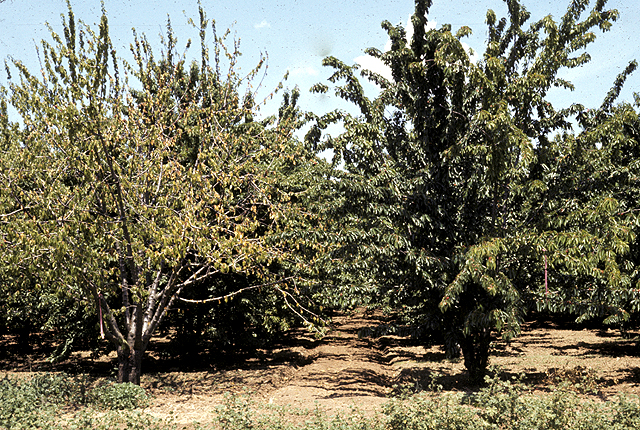
X-disease (Western X) or buckskin | Cherry
DISEASE: X-disease (Western X) or buckskin
HOST: Cherry (Prunus avium)
PATHOGEN: 'Candidatus Phytoplasma pruni'
PATHOGEN SYNONYM: Phytoplasma X-disease group
SOURCE: S. Thomson


